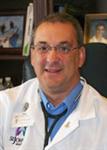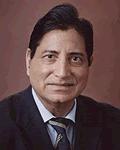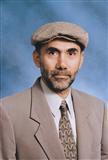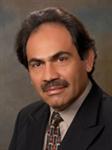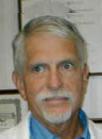The main task pursued by General Surgery, it is an in-depth study of the pathogenesis of diseases of surgical character. Together with this issue, surgery is developing methods and principles of clinical examination of patients, and the study of the principles of diagnosis and treatment diseases of surgical character.
Modern general surgery has a large number of individual surgical disciplines. These include, for example, thoracic, abdominal, purulent surgery, neurosurgery, urology, and others.
Symptoms
Symptoms characterizing surgical diseases exist in large numbers (more than a hundred). The clinical picture of a surgical disease always depends on the localization of the pathological process.
Symptoms may occur at such surgical diseases:
- elevated body temperature clearly indicates about occurring in the body of the inflammatory process. This symptom can detect many surgical diseases such as abscess, phlegmon, peritonitis, erysipelas, acute abdomen, and many others.
- disturbance of consciousness of any severity up to comatose state.
- nausea and vomiting. In most cases, these symptoms characterize the pathological processes in the organs of abdominal cavity.
- weakness, loss of ability to work, loss of appetite, accompanied by almost all the surgical nature of the disease.
- pain localized in any organ or system of the patient (in the chest, in the peritoneum, the head, limbs, perineum). The pain may be sharp and cutting, and pulling and dull, aching, or paroxysmal, migrating or given to the neighboring area.
- violations of the functional limb (arm or leg). This symptom can be observed in patients with vascular diseases such as endarteritis, atherosclerosis, thrombophlebitis varices.
- torments thirst and dry skin. The most common manifestations of acute blood loss.
- palpitations, low blood pressure, complaints of a cardiac character.
- skin lesions (sores, centers of congestion). These symptoms occur following surgical diseases: occlusive disease and atherosclerosis of the lower extremities. With them it is possible to observe the symptoms of dryness and flaking.
- abnormal breathing, changes in respiratory rate, dyspnea, hemoptysis, cough. These are symptoms of pathological diseases of the respiratory system.
- swelling of different parts of the body.
- changes in the configuration of the joints and bones form. These are the symptoms of osteomyelitis, sprains, fractures, tumors.
- convulsions - symptom of electrolyte disorders, such as pylorostenosis.
- cryptorchidism - a symptom of surgical disease in men, lack of testicles in the scrotum.
Diagnostics
At diagnostics of surgical diseases are applied laboratory and instrumental methods of research.
The laboratory methods include:
1. general analysis of blood (being diagnosed inflammatory processes or anemia).
2. general analysis of urine (taped pathological kidney function disorders).
3. Biochemical analysis of blood (is detected violations of functionality liver, kidney and other organ systems of the patient).
The instrumental methods of diagnosis in surgery include:
- Radiography (diagnose changes in the lung and bone tissue, diseases of the abdominal cavity).
- Ultrasound diagnosis (used in acute abdomen and allows you to quickly identify the pathology or disease, diagnose it and start treatment).
- Angiography - diagnose vascular surgical diseases.компьютерная томография.
- Magnetic resonance imaging.
- Arthroscopy (using an endoscope, the inducting into the joint cavity). This method is used for the diagnosis of joint disease.
- Fistulography (with contrast medium, is make a series of images of the pathological course of the review).
- Rheovasography (to assess vascular blood flow in the hands or legs of the patient).
- Irrigoscopy.
- Colonoscopy.
- Needle biopsy (taking material on pathological examination).
Prevention
All prevention activities of diseases of surgical character called to prevent the occurrence of pathology, which later will have to be treated in the department of surgery and will require surgery.
All prevention methods in surgery are built on the principles of proper organization of the regime of rest and Labour as well as human rational nutrition.
All this helps to regulate and to correct risk factors that can lead to development of diseases and pathologies surgical nature.
Treatment
For treatment of diseases surgical nature are applied conservative and operative methods.
In the course medical treatment are applied medications from the category of antibiotics, anticoagulants, pain medications, antispasmodics, vitamin complexes. The conservative treatment also includes physical therapy procedures and curative physical complexes
Operative treatment of (directly view of operation) is assigned and selected depending on the kind and type of surgical pathology, the age and condition of the patient and the qualification of the surgeon. There are two main types of of surgeries: radical (when the cause of the disease is completely is eliminated), palliative (it only alleviates the suffering of the patient).
hide
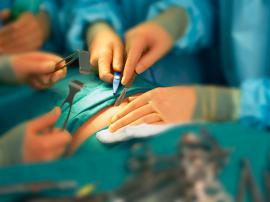 General surgery - one of the large sections of surgery in which study the basics of diseases of surgical character, is developed new approaches and methods of surgical treatment, without the introduction at a particular manifestation of certain diseases and technical features rare operations.
General surgery - one of the large sections of surgery in which study the basics of diseases of surgical character, is developed new approaches and methods of surgical treatment, without the introduction at a particular manifestation of certain diseases and technical features rare operations. 